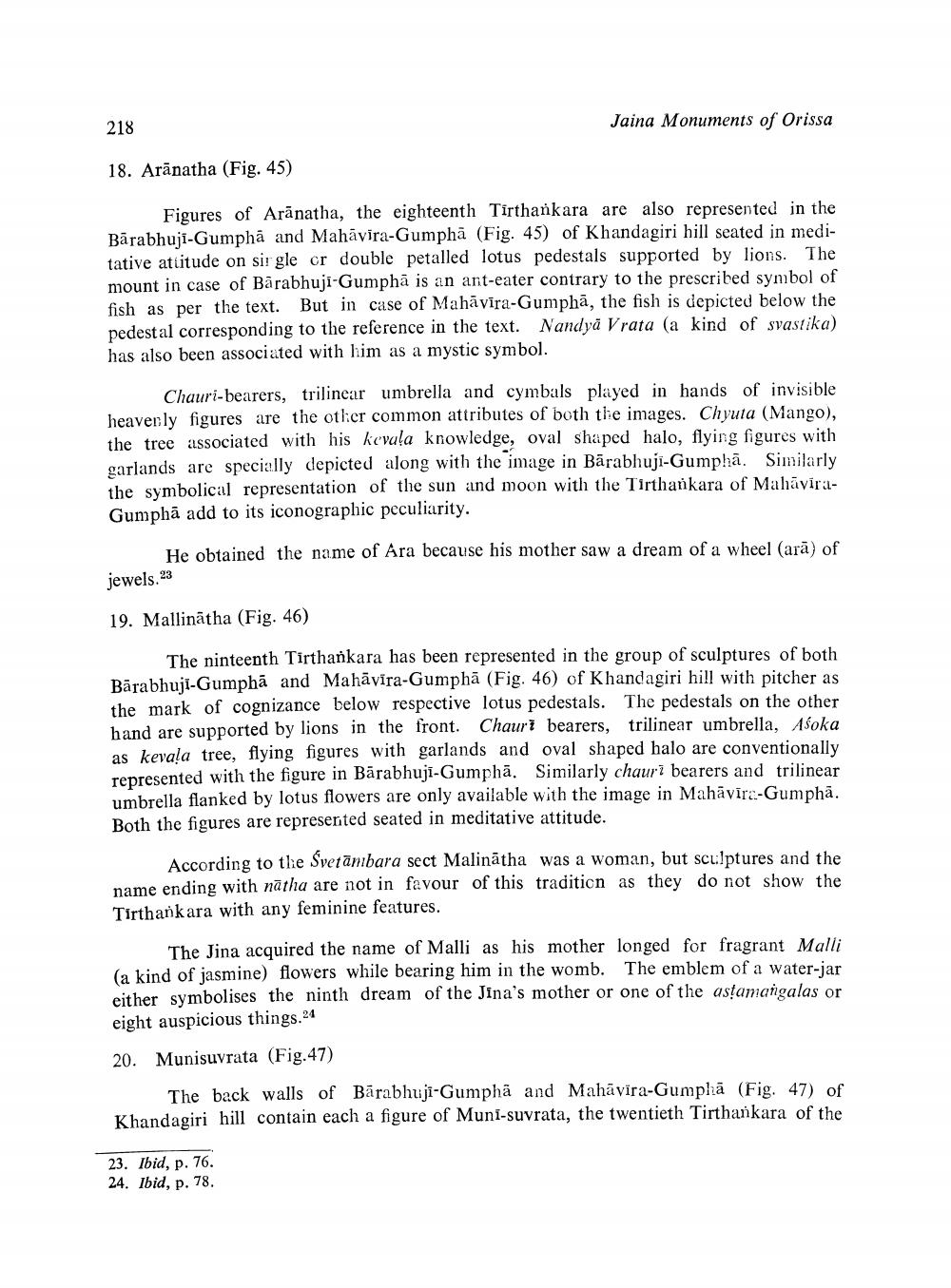________________
218
Jaina Monuments of Orissa
18. Arānatha (Fig. 45)
Figures of Arānatha, the eighteenth Tirthařkara are also represented in the Bārabhuji-Gumpha and Mahāvira-Gumphā (Fig. 45) of Khandagiri hill seated in meditative attitude on sir gle cr double petalled lotus pedestals supported by lions. The mount in case of Bārabhuji Gumphā is an ant-eater contrary to the prescribed symbol of fish as per the text. But in case of Mahāvīra-Gumphā, the fish is depicted below the pedestal corresponding to the reference in the text. Nandyā Vrata (a kind of svastika) has also been associated with him as a mystic symbol.
Chauri-bearers, trilinear umbrella and cymbals played in hands of invisible heavenly figures are the other common attributes of both the images. Chyuta (Mango), the tree associated with his kevala knowledge, oval shaped halo, flying figures with garlands are specially depicted along with the image in Bārabhuji-Gumphā. Similarly the symbolical representation of the sun and moon with the Tirthankara of MahāviraGumphā add to its iconographic peculiarity.
He obtained the name of Ara because his mother saw a dream of a wheel (arā) of jewels.23
19. Mallinātha (Fig. 46)
The ninteenth Tirthankara has been represented in the group of sculptures of both Bārabhuji-Gumphā and Mahāvīra-Gumphā (Fig. 46) of Khandagiri hill with pitcher as the mark of cognizance below respective lotus pedestals. The pedestals on the other hand are supported by lions in the front. Chauri bearers, trilinear umbrella, Asoka as kevala tree, flying figures with garlands and oval shaped halo are conventionally represented with the figure in Bārabhuji-Gumphā. Similarly chauri bearers and trilinear umbrella flanked by lotus flowers are only available with the image in Mahāvira-Gumphā. Both the figures are represented seated in meditative attitude.
According to the Svetāmbara sect Malinātha was a woman, but sculptures and the name ending with nātha are not in favour of this tradition as they do not show the Tirthankara with any feminine features.
The Jina acquired the name of Malli as his mother longed for fragrant Malli (a kind of jasmine) flowers while bearing him in the womb. The emblem of a water-jar either symbolises the ninth dream of the Jina's mother or one of the astamangalas or eight auspicious things.24 20. Munisuvrata (Fig. 47)
The back walls of Bārabhuji-Gumphã and Mahāvīra-Gumplā (Fig. 47) of Khandagiri hill contain each a figure of Muni-suvrata, the twentieth Tirthankara of the
23. Ibid, p. 76. 24. Ibid, p. 78.




